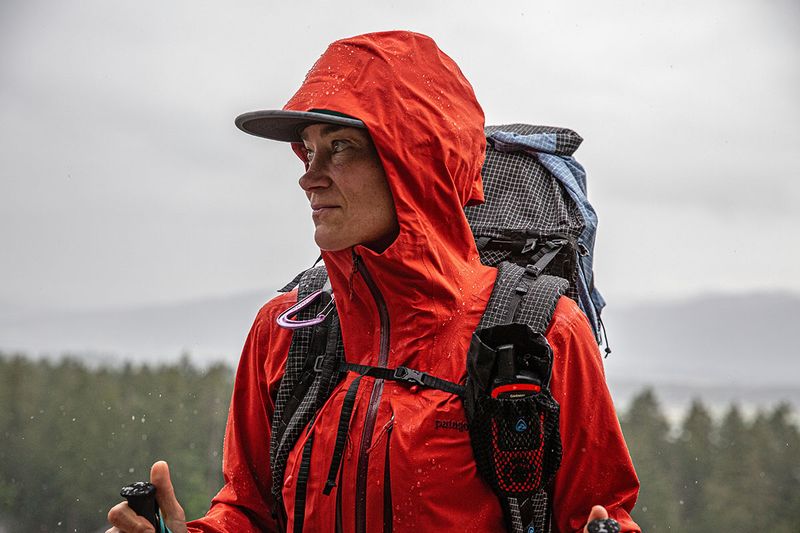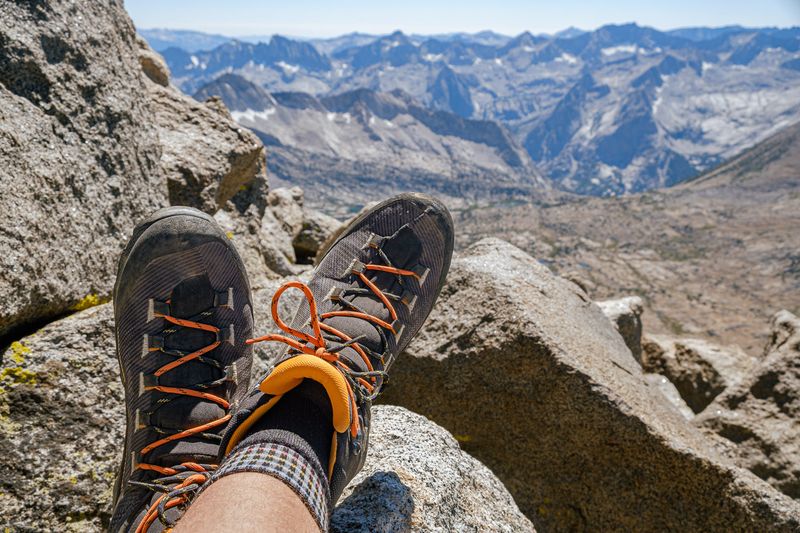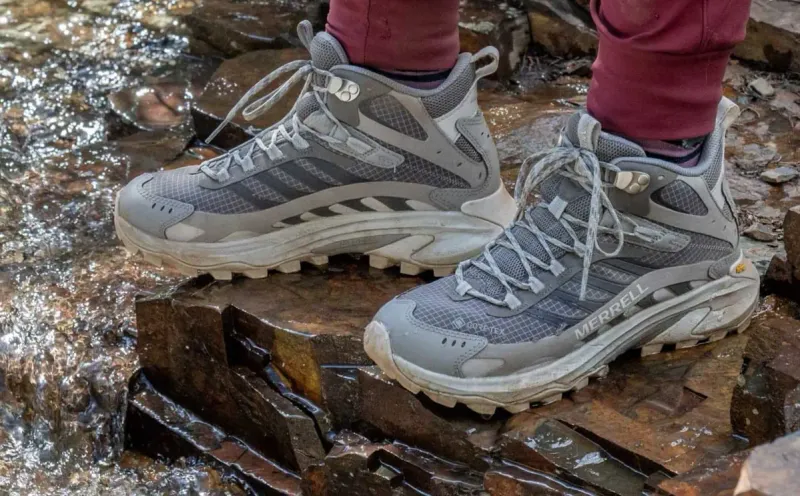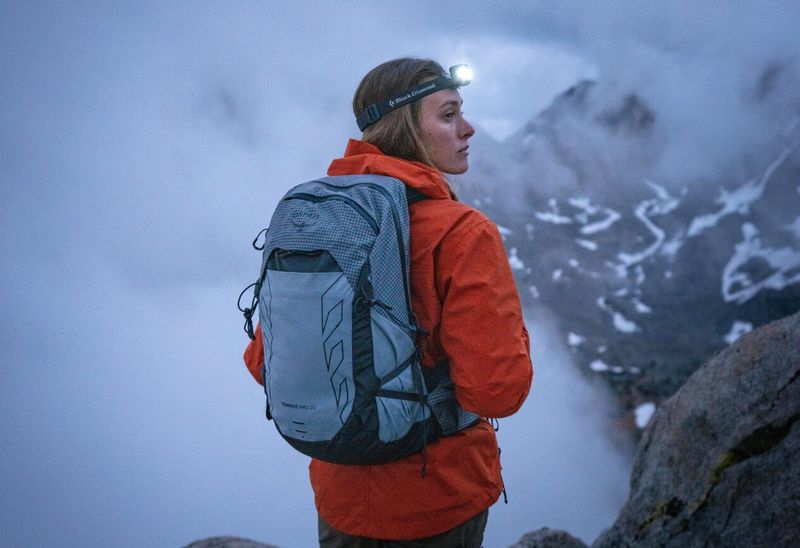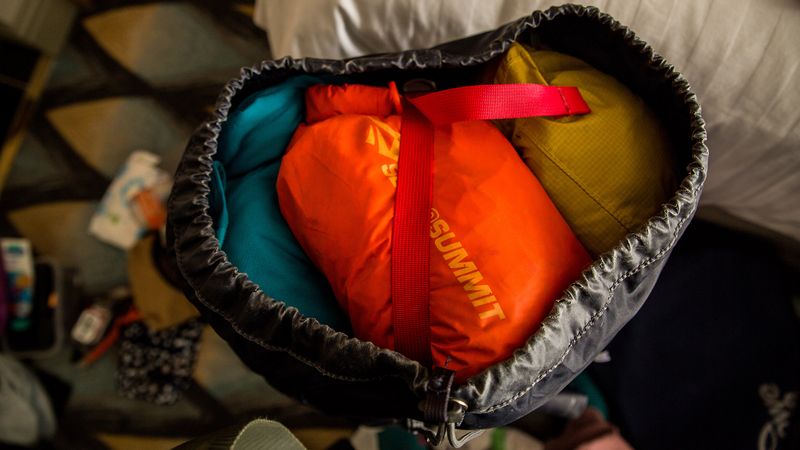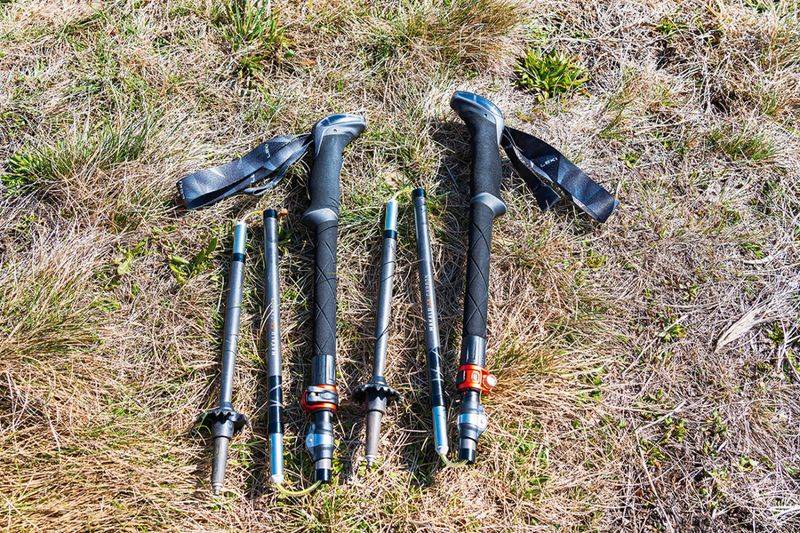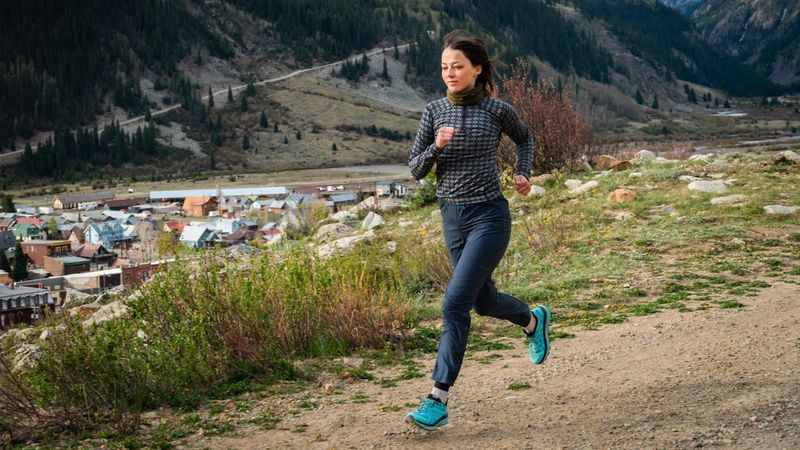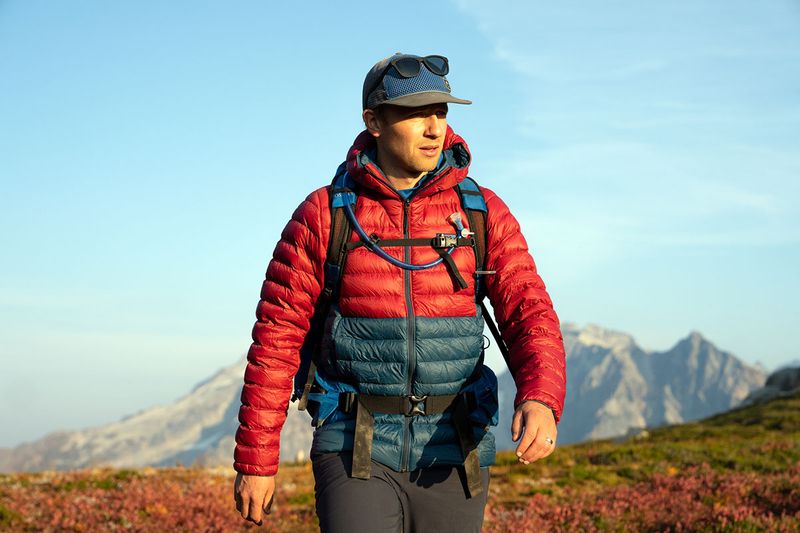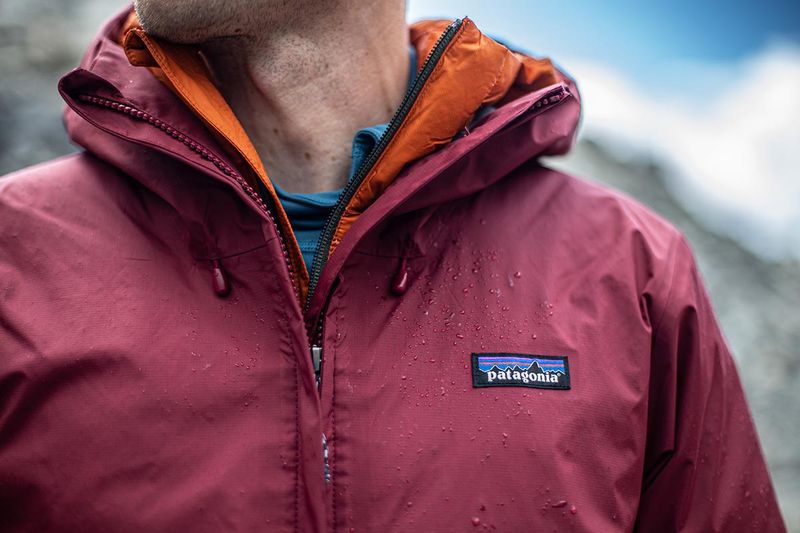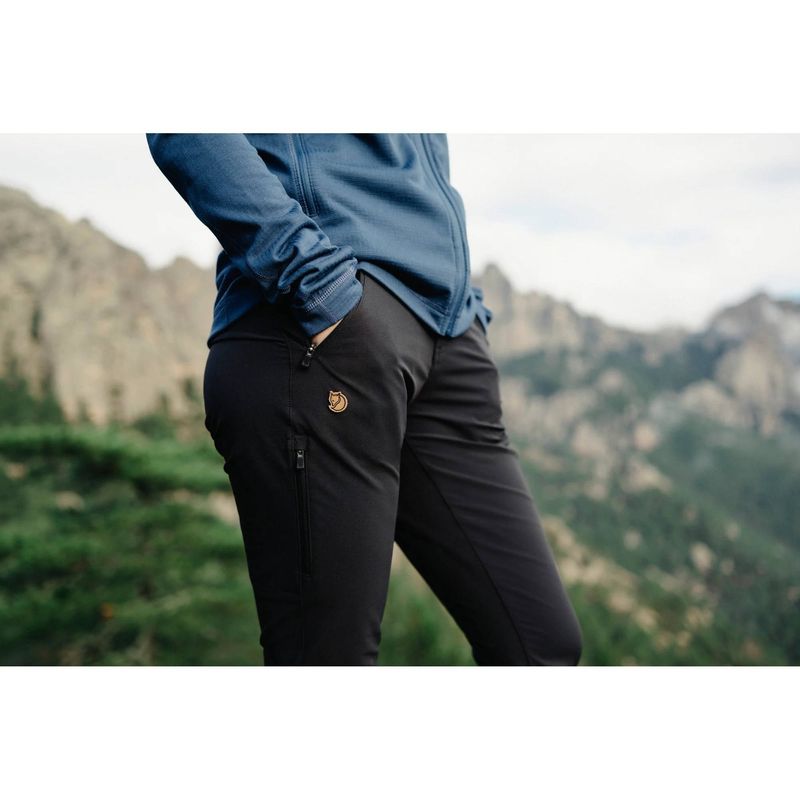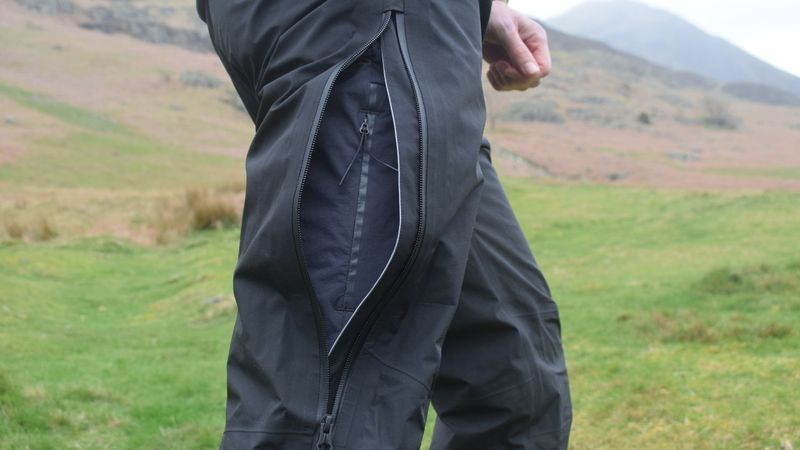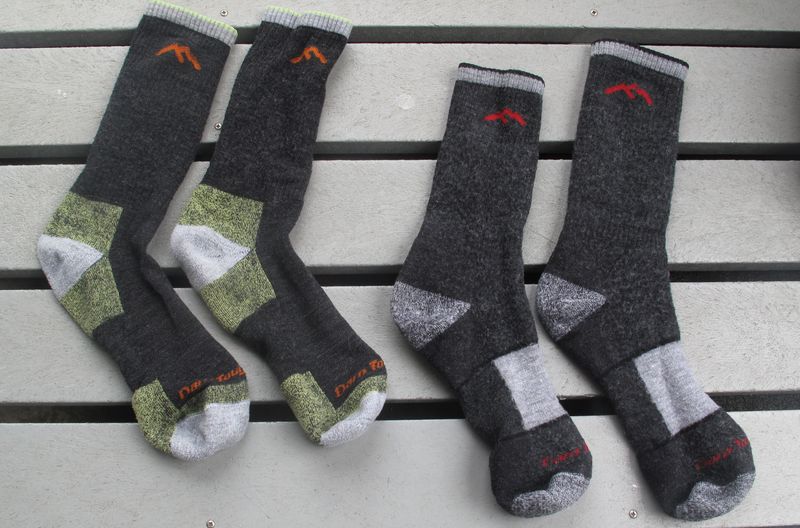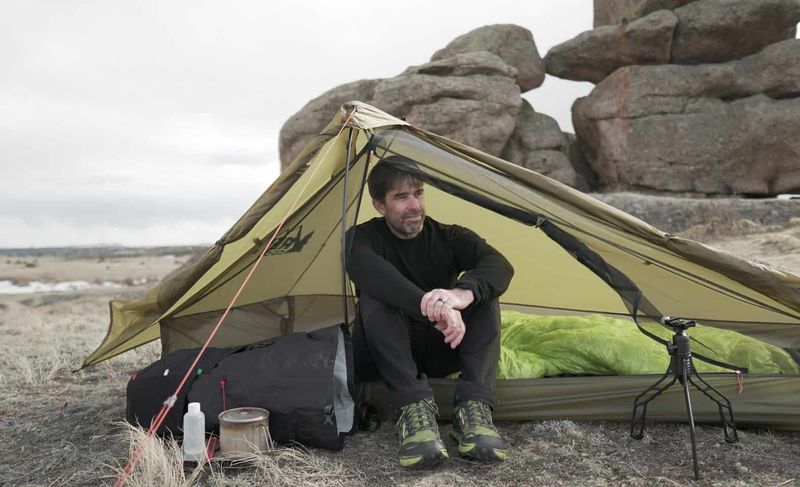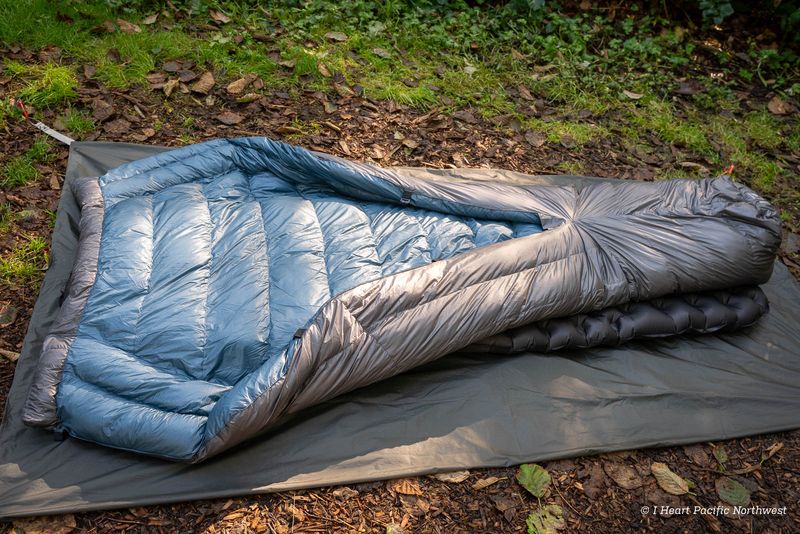Mist-shrouded forests, slick roots, and sudden squalls – Pacific Northwest trails reward those who prepare. The right kit keeps you dry when the sky opens and confident when granite turns greasy. From stormproof shells to traction-boosting poles, this list zeroes in on proven, field-tested picks for real PNW conditions. Ready to hike smarter, safer, and more comfortably in the rain’s favorite playground? Let’s gear up.
1. Arc’teryx Beta SV Jacket
When the sky breaks open on a ridge in the Cascades, the Beta SV earns its place. This premium 3-layer Gore‑Tex shell delivers serious waterproofing and breathability with a trim alpine fit that layers neatly over insulation. The hood cinches securely over a helmet or beanie, and the longer hem seals drafts on wind-scoured summits. Pit zips dump heat on steep climbs, while burly face fabric resists brush and granite abrasion. It’s expensive, but its storm-worthiness and durability excel in the PNW’s relentless wet. If you prioritize dependable dryness during shoulder-season temp swings, this shell is a standout.
2. Columbia Watertight II Jacket
For hikers watching budget but refusing to endure a soaking, the Watertight II is a reliable entry-level shell. Omni-Tech fabric, sealed seams, and an adjustable hood keep showers off during trail breaks and brisk scrambles. It packs small into a daypack and layers over a midlayer without feeling restrictive. While it lacks premium venting and the long-term durability of pricier shells, it punches above its weight on drizzle-heavy days. Zippered hand pockets secure snacks and maps as you thread through dripping cedar stands. If you want a wallet-friendly rain defense for frequent PNW day hikes, it’s a smart pick.
3. Patagonia M10 Storm Jacket
Ultralight and storm-ready, the M10 Storm shines for fast-and-light missions where pack space matters. Its waterproof membrane and minimalist design keep weight down while still offering true storm protection in the Olympic mist. The articulated hood and trim cut avoid flapping in wind, and the fabric breathes decently on sustained climbs. It stuffs easily alongside a filter and midlayer, making it ideal for variable forecasts. While not as rugged as heavyweight shells, it’s dependable for alpine scrambles and forested climbs. For hikers chasing mileage and vertical while staying rain-proof, the M10 Storm balances packability with performance superbly.
4. La Sportiva Aequilibrium Hike GTX
These boots are purpose-built for slick roots, wet granite, and muddy switchbacks. The Gore‑Tex liner keeps water out while the aggressive outsole grips through rain-soaked duff. A stable heel and supportive midsole inspire confidence when sidehilling over sloppy trails or stepping onto wet logs. The durable upper stands up to basalt edges and brushy traverses common in the Cascades. Break them in before big days; dial your sock combo for best fit. While not the lightest, they provide protective comfort for long, soggy miles. If dependable traction is your priority, this boot rises to PNW’s slippery challenges.
5. Merrell Moab Speed 2 Waterproof
For hikers who want an affordable, lighter shoe that still handles wet trails, the Moab Speed 2 Waterproof is a crowd-pleaser. It balances cushioning and responsiveness, keeping feet comfortable across rolling terrain. The waterproof membrane helps in drizzle and shallow puddles, while the outsole grips decently on damp rock. It’s a solid option for day hikers who don’t need full boot support. Fit is personal—try with your hiking socks and consider a quick break-in. While it won’t match alpine-class boots for edging or ankle support, its value and comfort make it a versatile PNW trail partner.
6. Osprey Talon Pro 20
The Talon Pro 20 hits the sweet spot for PNW day hikes: light, stable, and organized. Its ventilated back panel helps manage sweat on humid climbs, while the harness moves naturally on scrambles. Hydration compatibility, hipbelt pockets, and exterior attachment points keep essentials handy. Pair with a rain cover for true downpour protection, and stash a dry sack inside for electronics. The streamlined profile resists snagging in brushy corridors. Capacity suits layers, food, water, and safety kits. It’s small enough for fast missions yet capable of shoulder-season loads. For most regional outings, it’s a dialed choice.
7. Sea to Summit Light Stuff Sack (8L)
A lightweight dry sack is cheap insurance in the PNW, where drizzle can become deluge mid-hike. This 8L bag isolates spare layers, maps, and electronics from the wet, even inside a damp pack. Roll-top closure and taped seams provide reliable protection without bulk. Use one for insulation, another for first-aid and small essentials, and you’ll stay organized when conditions turn. Its slippery fabric slides easily into tight packs and sheds splash. Not submersible, but robust for day-to-day hiking. For the ounces it adds, the peace of mind is huge—your warm layer will actually be warm when needed.
8. LEKI Makalu FX Carbon Trekking Poles
Poles matter in the PNW, where trails mix slick roots, mud, and steep pitches. The Makalu FX Carbon offers lightweight strength with a secure locking mechanism and ergonomic grips. They fold compactly to stash for scrambles, then deploy fast when descending greasy switchbacks. Adjustable length dials in balance across uneven terrain and stream crossings. Rubber tips and baskets adapt to soil, rock, and snow patches lingering in shoulder seasons. Yes, they take pack space, but the stability they provide prevents slips and saves knees. For long climbs and long days, these poles are a force multiplier.
9. Platypus QuickDraw 1L Filter System
With abundant streams and seeps, water resupply is easy – if you can filter it. The QuickDraw system is fast, compact, and threads onto standard bottles. Its hollow-fiber cartridge flows quickly when maintained, letting you carry less water weight between sources. Backflush regularly to keep performance high, and pack a lightweight backup if heading remote. The squeeze design works well at muddy seeps common in late summer. It’s simple, reliable, and field-cleanable in minutes. For day hikers and overnighters alike, this filter keeps you hydrated without hauling liters through dripping ferns and long, humid climbs.
10. Smartwool Classic All-Season Merino Base Layer
Merino shines in the damp PNW by managing moisture, odor, and temperature swings. This all-season top wicks sweat on steep ascents yet keeps you warm at wind-whipped overlooks. Soft against skin, it layers under shells without bunching and dries faster than cotton ever could. It’s a dependable first line of comfort when drizzle and sweat battle for dominance. Wash gently and air dry to preserve longevity. While pricier than synthetics, the comfort-to-weight ratio is excellent for shoulder seasons. If you tend to overheat then chill at the summit, this base layer smooths out those highs and lows.
11. Patagonia Down Sweater
When temperatures dip behind a storm front, the Down Sweater is the instant-warmth layer you’ll be glad you packed. It’s light, compressible, and slides under shells without bulk. Perfect for snack breaks on windy saddles or evening descents beneath dripping boughs. The shell fabric resists light moisture, but pair with a rain jacket in steady precipitation. Responsible down offers excellent loft-to-weight. Keep it in a dry sack so it’s ready when you stop moving. Not the burliest jacket, yet its versatility and packability make it a PNW staple for variable shoulder-season and alpine conditions.
12. Patagonia Torrentshell 3L Rain Jacket
The Torrentshell 3L is a proven rain defense with a durable 3-layer build. It blocks persistent drizzle and heavier showers that define many PNW outings. Pit zips help dump heat on steep, humid climbs; the hood cinches snugly in gusts. It’s not as technical as top-tier alpine shells, but the value-to-protection ratio is excellent. The fabric feels robust against brush, and the jacket packs reasonably small. For hikers seeking dependable waterproofing without premium pricing, this is an easy recommendation. It pairs well with breathable base layers to balance sweat and rain – critical in the region’s damp climate.
13. Fjällräven Abisko Trail Stretch Trousers
These hiking pants handle brushy trails, muddy knees, and changing weather with quick-drying, stretchy fabric. Articulated patterning moves smoothly while stepping over logs and across talus. They resist abrasion on volcanic rock and dry fast after passing through wet huckleberry or alder. Breathable enough for humid climbs, yet protective in breezy drizzle when paired with a lightweight shell. Multiple pockets keep a map and snacks handy without flapping. For most three-season PNW hikes, they strike a smart balance between comfort and resilience. If you want one pair to carry you from drizzle to sun breaks, start here.
14. Waterproof Over-Pant Option (e.g., Montane Air)
When rain sets in for hours, waterproof pants keep legs warm and dry. Models like the Montane Air pair breathable membranes with side zips for venting during hard efforts. They slide over trail pants quickly when clouds open above a dripping canopy. Yes, they can feel clammy – especially on sustained climbs – but they shine during cold, windy rain and brushy traverses. Choose a cut that accommodates boots and allows stride without snagging. For shoulder-season ridgelines or soggy camps, a packable over-pant transforms comfort. Use selectively: quick-dry pants plus a shell is often best on warmer days.
15. Arc’teryx Calidum 5 Panel Cap
A brim is underrated in the rain. The Calidum 5 Panel sheds droplets from your face, improves visibility on rooty descents, and protects from sun breaks. Its quick-drying fabric performs well under hoods and helmets, and the low-profile fit resists wind lift. In dense woods where light fades early, a hat keeps drizzle off glasses and headlamps. It’s a simple comfort upgrade that weighs almost nothing and packs flat into any pocket. Not a storm shield, but a daily wear item that punches above its size for comfort, clarity, and focus on slick, technical tread.
16. RovyVon Aurora A8 USB-C Keychain Flashlight
Forest canopy and coastal fog can turn mid-afternoon dim. The Aurora A8’s pocket power and USB‑C charging make it a perfect just-in-case light. It clips to a zipper pull or key tether, ready for twilight trailheads or unexpectedly long descents. Multiple modes provide flood for camp tasks and brighter beams for short night navigation. Transparent body variants add fun visibility; the weight is negligible. Keep it topped up and you’ll avoid fumbling through dark, wet switchbacks. Not a headlamp replacement for true night missions, but an excellent backup that saves days from becoming epics.
17. Solo Stove Titan
Wet wood and soggy duff challenge camp cooking in the PNW. The Solo Stove Titan’s efficient airflow design burns hot with minimal smoke, helping marginal fuel combust cleanly. It’s compact enough for short overnights, yet powerful for boiling water and simple meals. Combine with dry kindling or fuel tabs to overcome damp conditions. Check regulations – fire restrictions or designated-cooker rules vary. While heavier than ultralight canister setups, the Titan shines when you need flexibility and can scavenge wood. For coastal zones and river camps where wood is plentiful but wet, it’s a reliable heat source.
18. Darn Tough Hiker Boot Full Cushion Midweight Socks
Blister prevention in the PNW starts with great socks. Darn Tough’s full-cushion build guards against pressure points and insulates when temps dip after a squall. Merino manages moisture, while dense knit resists abrasion from gritty, wet environments. The snug fit prevents bunching inside waterproof boots, reducing hot spots on long climbs. They dry reasonably fast and hold shape after repeated washes. Yes, they’re pricier than bargain packs – but their durability often outlasts several pairs. When you step in one too many puddles, you’ll appreciate how they stave off pruney discomfort and keep feet happier mile after mile.
19. REI Co-op Flash Air 1 Tent
For solo backpackers threading through the Olympics or North Cascades, the Flash Air 1 offers roomy shelter with minimal weight. Its airy design vents moisture well, crucial in humid, cool nights that breed condensation. Setup is quick after long, wet days; use trekking poles to save grams. Pair with a robust groundsheet in muddy sites, and stake securely against coastal gusts. While not a 4-season bunker, it’s ideal for shoulder-season and summer trips. Space-to-weight is excellent, and the price often undercuts boutique ultralight rivals. A practical, PNW-savvy home for one.
20. Outdoor Vitals StormLoft Down TopQuilt
Quilts shine in damp climates when paired with proper ground insulation. The StormLoft TopQuilt brings hydrophobic down and smart baffling for warmth without excess weight. It compresses small and lofts fast after a rainy hike. Use with a quality pad and consider a bivy or double-wall tent in prolonged moisture. The open-back design regulates temps during humid nights and cinches tight when coastal wind picks up. Keep it in a dry sack until camp to protect loft. For lightweight overnights where every ounce counts, this quilt balances warmth, packability, and PNW practicality.



